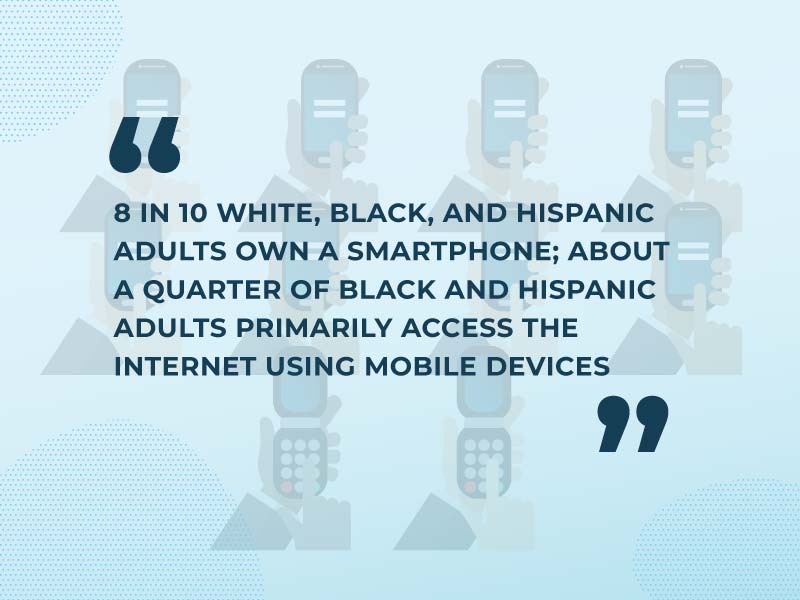To better address systemic inequalities in America’s health care system and following an executive order from President Biden, CMS is launching a comprehensive assessment of health equity over the next decade, the CMS Framework for Health Equity 2022-2032. Let’s examine health equity and how it’s been addressed so we can discover how organizations can target surveys to gather effective information in an easy-to-use manner.
HISTORY OF HEALTHY EQUITY LEGISLATION
Health equity is not new, as combatting it began with the Healthy People 2000 Framework. This 1990 initiative spearheaded a conversation about health equity by addressing disparities among patients and aiming to improve the health of Americans by the turn of the century. For this exploration, CMS defines health equity as:
“The attainment of the highest level of health for all people, where everyone has a fair and just opportunity to attain their optimal health regardless of race, ethnicity, disability, sexual orientation, gender identity, socioeconomic status, geography, preferred language, and other factors that affect access to care and health outcomes.”
Over the next ten years, CMS is taking concrete steps to eliminate existing inequities in health care that go beyond this initiative over 30 years ago. This updated framework “focuses on people who experience, or serve those who experience disproportionately high burdens of disease, worse quality of care and outcomes, and barriers to accessing care.” Chronic and infectious diseases are areas of increased attention as they disproportionately affect underserved communities.
This approach aims to improve all CMS programs, expanding beyond the Medicare-focused CMS Equity Plan for Improving Quality in Medicare released in 2015. Medicare, Medicaid, CHIP, and the Marketplace will all be included in the goal to achieve health equity across the country, across these programs, and in partner organizations. The end goal is to determine if these programs meet the needs of the populations it intends to serve or if they cause barriers to entry and receiving care. Obtaining data will be integral to this determination, which is where organizations need to pay close attention.
The CMS Framework for Health Equity 2022-2032 lists five priorities that will inform the next decade of healthcare services and determine how to achieve health equity. Five critical areas of attention are essential to success. Moreover, since CMS is the largest provider of health insurance in the US, it’s critical knowledge and highly recommended for organizations to follow suit.
Let’s explore how these five priorities will affect healthcare organizations and how surveying will be impacted.
ANALYSIS OF CMS FRAMEWORK TO ACHIEVE HEALTH EQUITY
- Expand the Collection, Reporting, and Analysis of Standardized Data
CMS identifies the standardization of data as priority number one to ascertain how social determinants of health (SDOH), including “economic stability, educational access, and quality, health care access and quality, neighborhood and built environment, and social and community context” affect health literacy and food insecurity, etc.
Furthermore, CMS seeks to reach underserved communities through health information technology and self-reporting. But how are these individuals reached? Surveying through means of smartphones can potentially be a powerful tool:
“8 in 10 White, Black, and Hispanic adults own a smartphone; about a quarter of Black and Hispanic adults primarily access the internet using mobile devices.”

Of course, the intention is not to simplify this issue, as there are still barriers to collecting patient data, which is an ongoing priority. Looking ahead, CMS seeks to share valuable information (within HIPAA requirements) collected with organizations in a joint effort to achieve health equity across sectors.
- Assess Causes of Disparities within CMS Programs, and Address Inequities in Policies and Operations to Close Gaps
There will be continual oversight of CMS “Conditions of Participation” and “Conditions for Coverage” to hold organizations to a high standard and to ensure they are meeting the needs of the participants receiving services from this healthcare organization. CMS wants to ensure that organizations serving these participants aren’t encountering barriers.
While it’s true that services under CMS, such as Medicaid and the Marketplace, have made health care more accessible to millions of people, that doesn’t eliminate the realities of inequity in ensuring continual coverage and high-quality health care that is geographically and culturally appropriate.
Determining where disparities in coverage exist and assessing provider availability is an important step for CMS and organizations to understand.
- Build Capacity of Health Care Organizations and the Workforce to Reduce Health and Health Care Disparities
In an ongoing effort to partner with and help organizations understand the importance of their role in achieving health equity, CMS encourages organizations to understand and address the barriers to care or the unmet needs of their patients. As a partner in health equity, CMS has a breadth of knowledge in this area and can help organizations understand how they can take impactful steps to drive change on a systemic level.
CMS is committed to providing learning and outreach tools to help organizations reduce disparities. It will be an important tool to educate themselves with and to be appropriately prepared to close gaps to access.
- Advance Language Access, Health Literacy, and the Provision of Culturally Tailored Services
CMS found that poor health status is tied to limited English proficiency and low health literacy. This is an issue of critical importance for the following clinical reasons:
“Failure to address language, health literacy, and culture can result in patient safety and adverse events including diagnostic errors, missed screenings, and inappropriate care transitions.”
Organizations should ask themselves honestly, “Are my communication tools effective?” and identify and bridge the gap for patients with low health literacy or who have limited English proficiency.
Does your organization have specific language skills that CMS can identify and inform a potential patient about? Connecting a patient with a provider that can best communicate with them is undoubtedly a step toward achieving better health equity.
- Increase All Forms of Accessibility to Health Care Services and Coverage
“The CDC estimates that 1 in 4 American adults has some form of disability, including related to mobility, cognition, independent living, hearing, vision, and self-care.”
It should be a priority of any organization to remove barriers to communication and any physical challenges that could be present for individuals with disabilities. To ascertain any existing barriers, in a custom survey, it’s recommended to ask patients about the accessibility of entrances and restrooms, signage, and whether they had any challenges understanding information presented during a visit.
Within priority five, CMS highlighted the necessity of gathering data from health care professionals (HCP) about accessibility, so organizations can likely expect this in their next CAHPS survey. CMS will be developing training and increasing awareness of programs for patients with disabilities for HCP to share with patients.
LOOKING AHEAD
With a sharpened focus on health equity, it is recommended to closely follow guidelines from CMS as they continue to unfold. Organizations can achieve health equity measures by gathering patient data and knowing which questions to ask.
If you’d like to target specific questions regarding health equity in a custom Brenmor survey, speak with an expert today.
